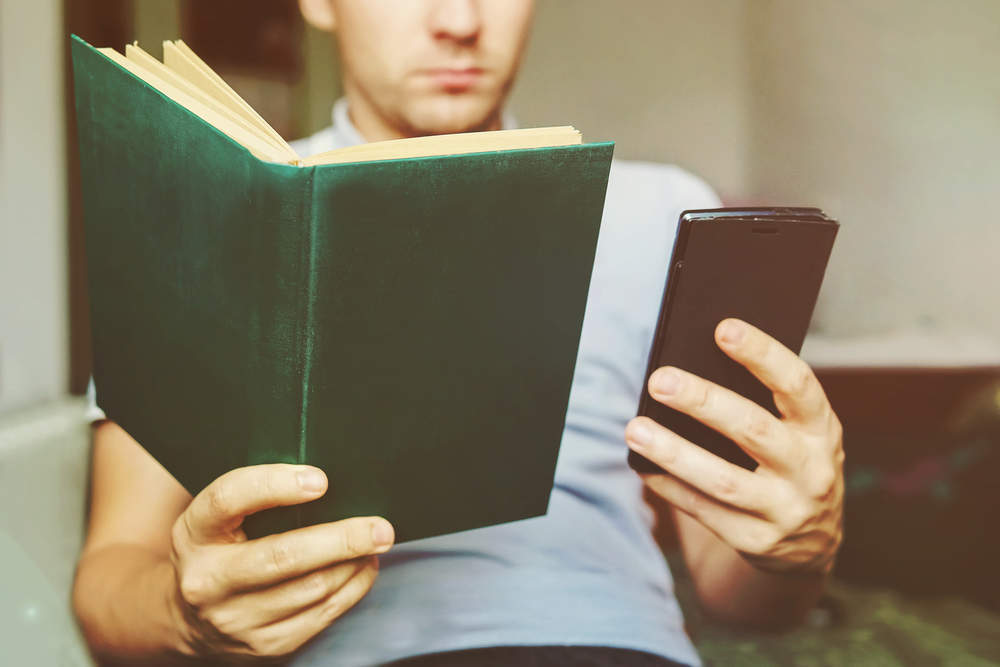
This month marks National Poetry Month in the US and Canada — with people celebrating the legacy of famed poets and the art form’s place in society.
However, there are fears for the health of traditional poetry — brought on by the rise of social-media poets, causing critics to warn of the genre’s demise.

Access deeper industry intelligence
Experience unmatched clarity with a single platform that combines unique data, AI, and human expertise.
One such critic is Rebecca Watts, who in her essay The Cult of the Noble Amateur published earlier this year, laments the rise of “consumer driven content” and “personality poets”.
These so-called personality poets — writers and spoken word poets such as Kate Tempest, Hollie McNish and Rupi Kaur, who rose to fame through the popularity of their YouTube and Instagram accounts — Watts accuses of trivialising the genre by making it overly accessible.
Whilst the accusation of trivialisation is a debated issue (picked up by publications including The Guardian, The Bookseller), these poets’ have also had a revitalising effect on the genre.
Around one million poetry books were sold in the UK in 2017, according to Nielsen Book Research — citing social media poets such as Kaur as a driving factor in the rise.

US Tariffs are shifting - will you react or anticipate?
Don’t let policy changes catch you off guard. Stay proactive with real-time data and expert analysis.
By GlobalDataSimilarly, the Canadian Book Market noted sales of poetry books grew 79% in 2016: “Largely due to the success of Kaur’s collection Milk and Honey”.
Meanwhile the NPD Group said 47% of poetry books sold in the US in 2017 were written by so-called Insta-poets.
It is not just social media that has reminded the public of poetry’s relevance over the past few years, but also the volatile political surroundings many find themselves in.
Wired wrote in November 2016, “don’t look now but 2016 is resurrecting poetry” — suggesting interest in poetry was spurred on by the US presidential election.
In the 48 hours following the election results, Poets.org reported it highest number of shares in four years, with the most commonly shared poems being Maya Angelou’s Still I Rise, Langston Hughes’s Let America Be America Again and WH Auden’s September 1, 1939.
Political change would appear to trigger public interest in poetry — albeit in Twitter-sized bites.
National Poetry Month goes digital in 2018
Over this month various cities in the US will play host to workshops, readings and lectures on favoured poets of the past and the perceived cultural impact and importance of the genre.
In New York, the origin city of the nation-wide celebration, the first Friday of the month saw the Schomburg Center for Research in Black Culture holding an open mic night in honour of Langston Hughes. The event was led by poetry editor of The New Yorker Kevin Young.
The city is also hosting the 16th annual Poetry & the Creative Mind event on 25 April, which will see celebrities sharing poems of their choice at the Lincoln Center. Past participants have included Meryl Streep and Tina Fey.
However, it is not only larger events that people are encouraged to take part in. To help inject a little bit of poetry into people’s daily lives, the Academy of American Poets has compiled a list of things individuals can do to celebrate the literary month.
There’s the Poem-a-Day venture, a digital poetry series launched in 2006 that features over 200 unpublished poems sent via email or social media to over 350,000 readers. These are accompanied by commentary from the poets on weekdays, while weekends are spent highlighting more canonical works.
On 26 April there’s the Poem in Your Pocket Day, initiated in 2002 by the Mayor’s office in New York, in collaboration with the city’s Departments of Cultural Affairs and Education, and adopted by Canada in 2016.
The project is fairly self-explanatory, asking people to carry poems in their pockets and sharing it with others throughout the day, as well as on social media using the hashtag #pocketpoem.
The League of Canadian Poets have made similar suggestions such as starting your own poetry reading event, hosting an interview with a poet about their latest project, or sharing a poem every day of April under the hashtag #todayspoem.
The New York Times also gives a nod to the holiday with its Found Poem Student Contest, asking people between the ages of 13 and 19 to find a poem in any previous article from the publication. The paper also has a haiku Tumblr page which creates “serendipitous poetry” using an algorithm that scans the New York Times home page selecting words.
How its been recognised in the past
- The first presidential speech addressing National Poetry Month was in April 1996 by Bill Clinton. Since then, similar proclamations have been given by mayors and other government officials across the US
- To honour the tenth anniversary of National Poetry Month in 2006 the Empire State Building was illuminated
- In 1998, the Academy of American Poets and the American Poetry & Literacy Project distributed 100,000 free poetry books from New York to California







